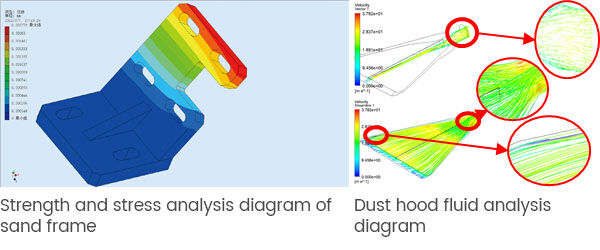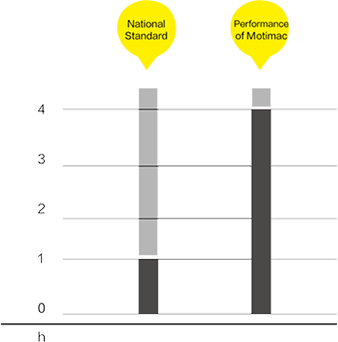R&D History
Motimac
is supported by the goverment as enterprise in the high-tech field. Technology research and development is the core of the company, and it bears the mission of driving the development of the company's products and trade.
At present:
There are 19 professional and technical personnel
5 R&D personnel
Obtained 43 national patents




To be the world's leading sanding solution advisor
In terms of R&D and innovation, in line with the mission of devoting itself , MOTIMAC has continuously introduced new solutions and new sander for different industries.
From the original solo operation type sander to the floating type sander for line operation, from the ordinary roller type sander to the segmented pad sander, from the multi-variety non-standard customized business model to the configurable business model, Every change is a reform and innovation of the sanding process.
Encourage and cultivate outstanding talents, and reserve and allocate a large number of talents to achieve higher innovation and development.
Continuously innovate in product research and development, adapt to market needs and continue to guide the market. In performance, we constantly break through ourselves and keep improving.
MOTIMAC R&D is divided into two parts: hardware and software, and a multi-level and multi-dimensional technology R&D system has been established.
Parameter calculation + CAE analysis
Each component is optimized and redesigned after parameter calculation + CAE analysis. Whether welding, casting, heat treatment, machining and other manufacturing processes are within the control range. The purchased parts are also within the control range, so that the mechanical structure is solid and stable without deformation, which improves the stability of the equipment.

Product Test Verification
The below test performance of Motimac serves as same standard of quality control in daily production of Motimac.

G1 Balance No abnormal sound and vibration
G0.4 Balance No abnormality after increasing the speed by 1.5times
Sanding roller, tension belt roller, pulley dynamic balance dectection

1 hour The temperature rise of rotating parts at 35℃
4 hours The temperature rise of rotating parts below 35℃
Detection of equipment continuous idling time

The average thickness tolerance is 0.125mm
The average thickness tolerance is 0.08mm
The average thickness tolerance detection for those panels with width
1600mm-2600mm

Three point detection in horizontal direction with biggest tolerance 0.06mm
Three point detection in horizontal direction with biggest tolerance 0.02mm
Flapped error detection of roller in operation

Providing you with integrated sanding solutions
24/7 before-sales and after-sales services
Comprehensive technical support

